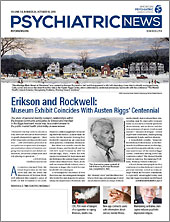Though there is widespread public concern about the prevalence of vaping by youth, a report published in JAMA Pediatrics suggests that youth with nicotine use disorder may not be receiving therapies that can improve their odds of quitting.
Researchers at Boston Children’s Hospital and colleagues used a Medicaid claims database to identify 81,144 youth or young adults aged 10 to 22 who were diagnosed with nicotine use disorder between January 1, 2014 (when the Affordable Care Act began barring state Medicaid programs from excluding any FDA-approved cessation medication), and June 30, 2015. They found that only about 5% of these Medicaid beneficiaries (4,349) received an evidence-based treatment within six months of their diagnosis.
Of this number, 3,254 received behavioral counseling, 985 received a smoking-cessation medication (nicotine replacement, bupropion, or varenicline), and 110 received both.
In comparison, almost 35% of adult smokers in Medicaid received either counseling and/or medication in 2015, according to a study in the American Journal of Preventative Medicine. (Unlike the JAMA Pediatrics study, the adult analysis relied on data obtained from interviews with patients, so the numbers may not be directly comparable.)
The differences in receipt of smoking cessation treatment between adults and youth is likely due to multiple factors, said the lead author of the JAMA Pediatrics study, Nicholas Chadi, M.D., M.P.H. He is a clinical assistant professor of pediatrics at Sainte-Justine University Hospital Centre in Montreal. Chief among these factors may be hesitancy on the part of the physician, he told Psychiatric News. “Many pediatricians may not be adequately trained or feel comfortable discussing smoking cessation, especially with younger patients.”
The analysis by Chadi and colleagues found that children and adolescents were less likely to receive pharmacotherapy than young adults. The study also found that youth who had a co-occurring psychiatric or substance use diagnosis were more likely to receive cessation medications, which may reflect that these youth were seen by psychiatrists instead of pediatricians; however, Chadi cautioned that the claims data did not specify who was providing care to the patients.
Chadi noted the low rates of receipt of evidenced-based treatment for nicotine use disorder among youth may also be due to youth declining the treatment or seeking over-the-counter smoking cessation products. “However, we know from other studies that young smokers who want to quit do seek professional help, so the numbers should be higher than what we found,” he said.
While the individual treatment rates were low, perhaps more alarming was that just 110 of the young Medicaid beneficiaries—0.1% of all youth/young adults diagnosed with nicotine use disorder—received both counseling and pharmacotherapy.
“Counseling for NUD [nicotine use disorder] when combined with pharmacotherapy has been shown to increase quit rates two- to threefold in adults, and emerging evidence suggests that similar benefits could be seen in adolescents and young adults,” Chadi and colleagues wrote. “Such low treatment rates during a developmental period when adolescents and young adults are at increased risk of developing lifelong nicotine addiction likely represent a missed opportunity ... in this population.”
This study was supported by the National Institute on Drug Abuse, Thrasher Research Fund Early Career Award, and the Academic Pediatric Association. ■
“Treatment for Nicotine Use Disorder Among Medicaid-Enrolled Adolescents and Young Adults” is posted
here. “Cessation Behaviors and Treatment Use Among U.S. Smokers by Insurance Status, 2000–2015” is posted
here.
